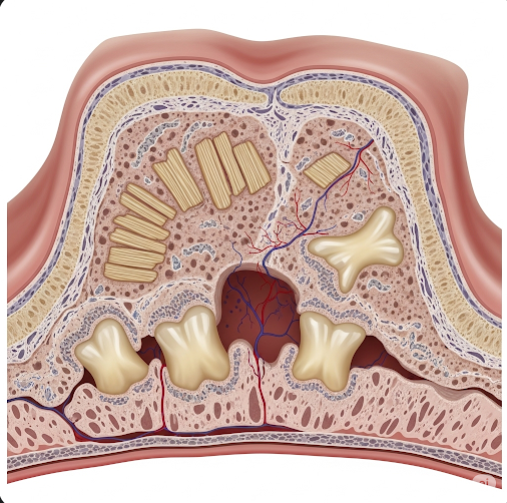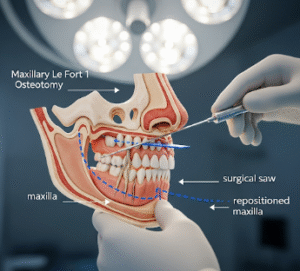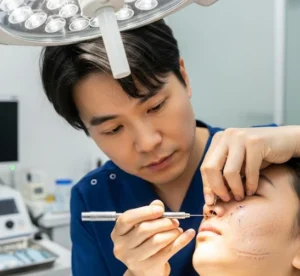Overview
Ossifying fibroma is a rare, benign (non-cancerous) bone tumor that most often develops in the jawbones, particularly the mandible (lower jaw). It is a slow-growing but potentially expansive lesion that can cause facial asymmetry, discomfort, and dental displacement if untreated. In Korea, oral and maxillofacial specialists, as well as advanced dental hospitals, provide state-of-the-art diagnosis and treatment, including precise surgical removal techniques that preserve appearance and function.
What is Ossifying Fibroma?
Ossifying fibroma is classified as a fibro-osseous lesion, meaning it contains both fibrous tissue and calcified bone-like material. It typically arises in the jaw due to abnormal bone formation, though rare cases may occur in other facial bones. Unlike malignant tumors, ossifying fibroma does not spread to distant parts of the body but can grow locally, replacing normal bone tissue with a hard, fibrous mass.
Symptoms
In the early stages, ossifying fibroma may not cause noticeable symptoms. As it grows, patients may experience:
- A painless swelling or lump in the jaw or face
- Facial asymmetry
- Loosening or displacement of teeth
- Difficulty chewing or speaking in advanced cases
- Rarely, pain or numbness if nerves are compressed
Causes
The exact cause of ossifying fibroma is unknown, but possible contributing factors include:
- Developmental abnormalities in bone formation
- Genetic predisposition in certain individuals
- Hormonal influences (some cases occur more often in women)
- Chronic irritation or trauma to the jawbone
Risk Factors
While ossifying fibroma can occur in anyone, certain factors may increase risk:
- Female gender (higher prevalence in women aged 20–40)
- Family history of fibro-osseous jaw lesions
- History of jaw injury or chronic irritation
- Certain genetic conditions (e.g., hyperparathyroidism-jaw tumor syndrome)
Complications
If untreated, ossifying fibroma can lead to:
- Progressive jaw enlargement and facial deformity
- Misalignment of teeth and bite problems
- Difficulty eating, speaking, or breathing in severe cases
- Recurrence if the lesion is not completely removed
Prevention
There is no specific method to prevent ossifying fibroma, as its development is not well understood. However, maintaining good oral health, addressing jaw pain or swelling early, and attending regular dental check-ups can help in early detection and management.
Treatment Options in Korea
In Korea, treatment is typically surgical, with an emphasis on preserving function and appearance:
- Enucleation or curettage: Removal of the tumor while preserving surrounding bone, used for smaller lesions
- Resection with reconstruction: For larger or recurrent tumors, removal of affected bone with immediate reconstruction using bone grafts or implants
- Regular monitoring: Post-surgical follow-ups with imaging to detect any recurrence
- Rehabilitation: Dental restoration, orthodontics, and speech therapy if needed after surgery
Korea’s advanced oral and maxillofacial surgery centers use high-resolution imaging (CT, MRI) to plan precise surgical procedures, often with minimally invasive approaches that reduce recovery time and improve cosmetic outcomes.













